Mitsubishi Eclipse Cross vs Toyota RAV4 – Which one offers the better deal?
Compare performance, boot capacity, efficiency and price at a glance.
Find out which car is the better choice for you – Mitsubishi Eclipse Cross or Toyota RAV4?
The automotive market is ever-evolving, with new technologies and innovations continuously pushing the boundaries of what is possible in vehicle performance, fuel efficiency, and environmental sustainability. In this article, we dive deep into a comparison between two popular compact SUVs: the Mitsubishi Eclipse Cross and the Toyota RAV4. These models offer unique features and technologies, making them strong contenders in their segment. Let's explore their specifications, performance, and innovative aspects.
Engine and Performance: Power Under the Hood
The Mitsubishi Eclipse Cross is equipped with a 2.36-liter four-cylinder engine, which produces 188 horsepower (138 kW). This vehicle offers an impressive all-wheel drive option and is designed for both efficiency and performance. With a consumption rate of just 2 L/100km, the Eclipse Cross stands out for its fuel efficiency. It also boasts an electric-only range of up to 45 km, making it a great choice for short commutes.
In contrast, the Toyota RAV4 provides a range of engine options, including both full hybrid and plug-in hybrid variants. Its 2.5-liter four-cylinder engine produces between 218 and 306 horsepower (160 to 225 kW), depending on the model. The RAV4’s fuel consumption ranges from 1 L/100 km in its plug-in hybrid form to approximately 5.6 L/100 km in standard configurations. It offers an electric range of up to 75 km, allowing for versatility and reduced fuel usage during short drives.
Acceleration and Speed: Getting from 0 to 100
The Mitsubishi Eclipse Cross has a claimed acceleration time of 0-100 km/h in approximately 10.9 seconds, with a top speed of 162 km/h. While this performance is respectable, the Toyota RAV4 showcases stronger acceleration figures, achieving 0-100 km/h times ranging from 6 to 8.4 seconds, depending on the model variant. Furthermore, the RAV4's maximum speed reaches 180 km/h, reflecting its robust performance capabilities.
Dimensions and Cargo Capacity: Room to Breathe
In terms of dimensions, the Mitsubishi Eclipse Cross measures 4,545 mm in length, 1,805 mm in width, and 1,685 mm in height, providing ample space for passengers and cargo. The trunk capacity stands at 359 liters, which is ample for everyday needs.
The Toyota RAV4, being slightly larger, measures 4,600 mm in length, 1,855 mm in width, and also stands at 1,685 mm in height. Its trunk capacity significantly outshines the Eclipse Cross, with 520 to 580 liters, depending on the configuration. This additional cargo space gives RAV4 owners an edge in practicality for families or those needing to haul larger items.
Innovative Technologies: Features That Matter
The Mitsubishi Eclipse Cross is outfitted with several innovative features, including a state-of-the-art infotainment system, adaptive cruise control, and lane departure warning systems, all tailored to enhance safety and driving comfort.
On the other hand, the Toyota RAV4 excels in technology with its advanced Safety Sense suite, which includes pre-collision systems, dynamic radar cruise control, and lane-keeping assist. Additionally, the RAV4 features a user-friendly multimedia interface, making tech integration smoother for users. The plug-in hybrid models also incorporate regenerative braking, optimizing energy use for a more sustainable drive.
Environmental Considerations: Going Green
When comparing environmental impact, the Mitsubishi Eclipse Cross scores well with a CO2 emission level of just 46 g/km, placing it in the B efficiency class. This makes it a candidate for eco-conscious drivers.
The Toyota RAV4 hybrid models have CO2 emissions ranging from 22 to 128 g/km, based on engine type and configuration. The plug-in hybrid variant offers the lowest emissions, emphasizing Toyota’s commitment to reducing the environmental footprint of their vehicles. Although it fits into the D efficiency class for some versions, its diverse power options offer flexibility for various consumer needs.
Final Thoughts: Which to Choose?
In conclusion, both the Mitsubishi Eclipse Cross and the Toyota RAV4 deliver solid performance, modern technology, and practicality suitable for today's drivers. The Eclipse Cross excels in fuel efficiency and affordability, while the RAV4 impresses with its power options, advanced safety features, and cargo capacity.
Your final decision may boil down to specific needs—whether you prioritize fuel efficiency, performance, or space, both contenders have a lot to offer in the compact SUV class. As the automotive landscape continues to evolve, these two vehicles remain strong choices for those seeking a blend of innovation and capability.
Here’s where it gets real: The technical differences in detail
Costs and Efficiency: Price and efficiency are key factors when choosing a car – and this is often where the real differences emerge.
Toyota RAV4 has a minimal advantage in terms of price – it starts at 35100 £, while the Mitsubishi Eclipse Cross costs 36000 £. That’s a price difference of around 857 £.
Fuel consumption also shows a difference: the Toyota RAV4 manages with 1 L and is therefore convincingly more efficient than the Mitsubishi Eclipse Cross with 2 L. The difference is about 1 L per 100 km.
As for range, the Toyota RAV4 performs distinct better – achieving up to 75 km, about 30 km more than the Mitsubishi Eclipse Cross.
Engine and Performance: Under the bonnet, it becomes clear which model is tuned for sportiness and which one takes the lead when you hit the accelerator.
When it comes to engine power, the Toyota RAV4 has a distinct edge – offering 306 HP compared to 188 HP. That’s roughly 118 HP more horsepower.
In acceleration from 0 to 100 km/h, the Toyota RAV4 is significantly quicker – completing the sprint in 6 s, while the Mitsubishi Eclipse Cross takes 10.90 s. That’s about 4.90 s faster.
In terms of top speed, the Toyota RAV4 performs barely noticeable better – reaching 180 km/h, while the Mitsubishi Eclipse Cross tops out at 162 km/h. The difference is around 18 km/h.
Space and Everyday Use: Cabin size, boot volume and payload all play a role in everyday practicality. Here, comfort and flexibility make the difference.
Both vehicles offer seating for 5 people.
In curb weight, the Toyota RAV4 is somewhat lighter – 1745 kg compared to 1985 kg. The difference is around 240 kg.
In terms of boot space, the Toyota RAV4 offers distinct more room – 580 L compared to 359 L. That’s a difference of about 221 L.
In maximum load capacity, the Toyota RAV4 performs noticeable better – up to 1690 L, which is about 582 L more than the Mitsubishi Eclipse Cross.
When it comes to payload, Toyota RAV4 evident takes the win – 600 kg compared to 440 kg. That’s a difference of about 160 kg.
Our conclusion: The Toyota RAV4 proves to be is largely superior and thus becomes our DriveDuel Champion!
Overall, Toyota RAV4 is the better all-rounder in this comparison.
Mitsubishi Eclipse Cross
The Mitsubishi Eclipse Cross presents a sleek fusion of dynamic design and versatile functionality, perfect for urban adventures and weekend getaways alike. Its elegant lines and bold front grille make a strong statement on the road, while its well-appointed interior offers a comfortable and connected driving experience. With advanced safety features and intuitive technology, the Eclipse Cross ensures drivers feel secure and in control, whether navigating city streets or scenic routes.
details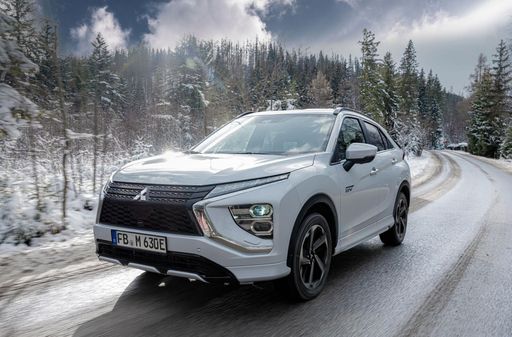 @ Mitsubishi Motos
@ Mitsubishi Motos
 @ Mitsubishi Motos
@ Mitsubishi Motos
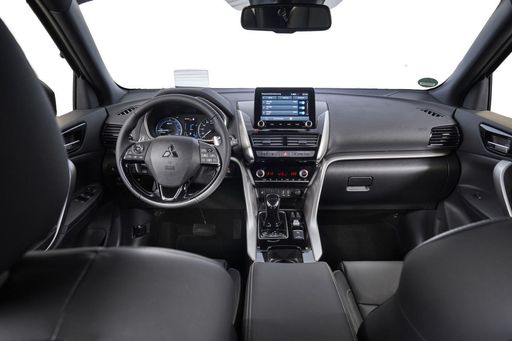 @ Mitsubishi Motos
@ Mitsubishi Motos
Toyota RAV4
The Toyota RAV4 stands out in the crowded SUV market with its distinct design, embodying a blend of robustness and style. Its cabin provides a harmonious fusion of comfort and practicality, offering plenty of space for both passengers and luggage. This vehicle is engineered to deliver a smooth driving experience, whether manoeuvring through city streets or exploring winding country roads.
details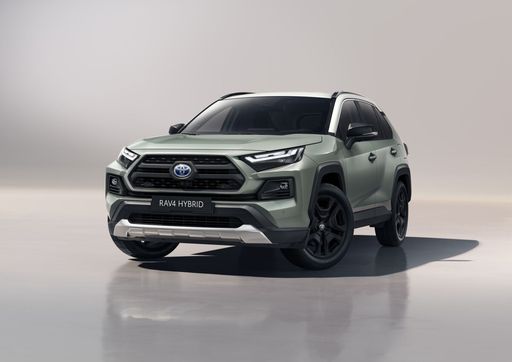 @ Toyota
@ Toyota
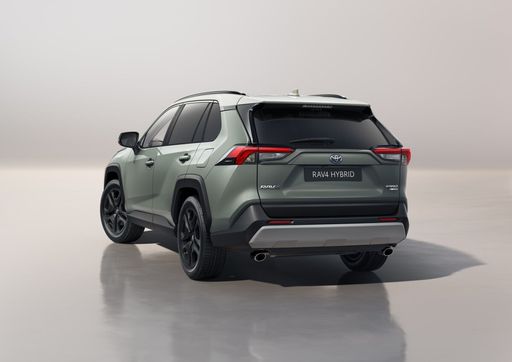 @ Toyota
@ Toyota
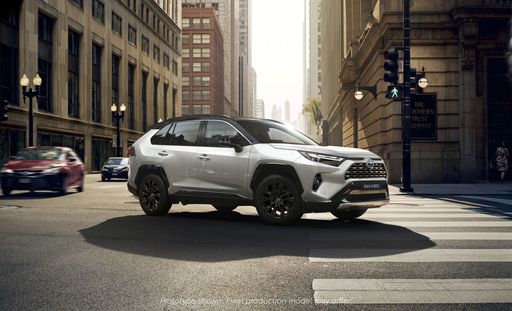 @ Toyota
@ Toyota
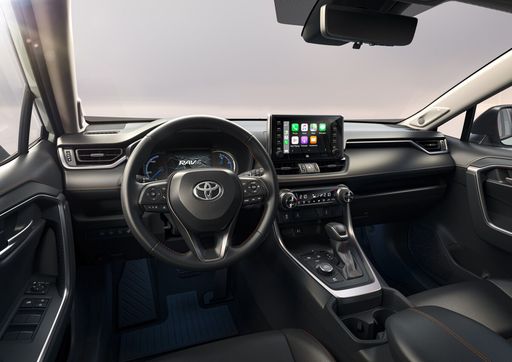 @ Toyota
@ Toyota

|

|
|
|
|
Costs and Consumption |
|
|---|---|
|
Price
36000 - 42000 £
|
Price
35100 - 55700 £
|
|
Consumption L/100km
2 L
|
Consumption L/100km
1 - 5.6 L
|
|
Consumption kWh/100km
-
|
Consumption kWh/100km
-
|
|
Electric Range
45 km
|
Electric Range
75 km
|
|
Battery Capacity
-
|
Battery Capacity
-
|
|
co2
46 g/km
|
co2
22 - 128 g/km
|
|
Fuel tank capacity
43 L
|
Fuel tank capacity
55 L
|
Dimensions and Body |
|
|---|---|
|
Body Type
SUV
|
Body Type
SUV
|
|
Seats
5
|
Seats
5
|
|
Doors
5
|
Doors
5
|
|
Curb weight
1985 - 2052 kg
|
Curb weight
1745 - 1910 kg
|
|
Trunk capacity
359 L
|
Trunk capacity
520 - 580 L
|
|
Length
4545 mm
|
Length
4600 mm
|
|
Width
1805 mm
|
Width
1855 mm
|
|
Height
1685 mm
|
Height
1685 mm
|
|
Max trunk capacity
1108 L
|
Max trunk capacity
1604 - 1690 L
|
|
Payload
373 - 440 kg
|
Payload
390 - 600 kg
|
Engine and Performance |
|
|---|---|
|
Engine Type
Plugin Hybrid
|
Engine Type
Full Hybrid, Plugin Hybrid
|
|
Transmission
-
|
Transmission
Automatic
|
|
Transmission Detail
-
|
Transmission Detail
CVT
|
|
Drive Type
All-Wheel Drive
|
Drive Type
Front-Wheel Drive, All-Wheel Drive
|
|
Power HP
188 HP
|
Power HP
218 - 306 HP
|
|
Acceleration 0-100km/h
10.90 s
|
Acceleration 0-100km/h
6 - 8.4 s
|
|
Max Speed
162 km/h
|
Max Speed
180 km/h
|
|
Torque
-
|
Torque
-
|
|
Number of Cylinders
4
|
Number of Cylinders
4
|
|
Power kW
138 kW
|
Power kW
160 - 225 kW
|
|
Engine capacity
2360 cm3
|
Engine capacity
2487 cm3
|
General |
|
|---|---|
|
Model Year
2021 - 2022
|
Model Year
2024 - 2025
|
|
CO2 Efficiency Class
B
|
CO2 Efficiency Class
D, B
|
|
Brand
Mitsubishi
|
Brand
Toyota
|
What drive types are available for the Mitsubishi Eclipse Cross?
Available configurations include All-Wheel Drive.
The prices and data displayed are estimates based on German list prices and may vary by country. This information is not legally binding.
